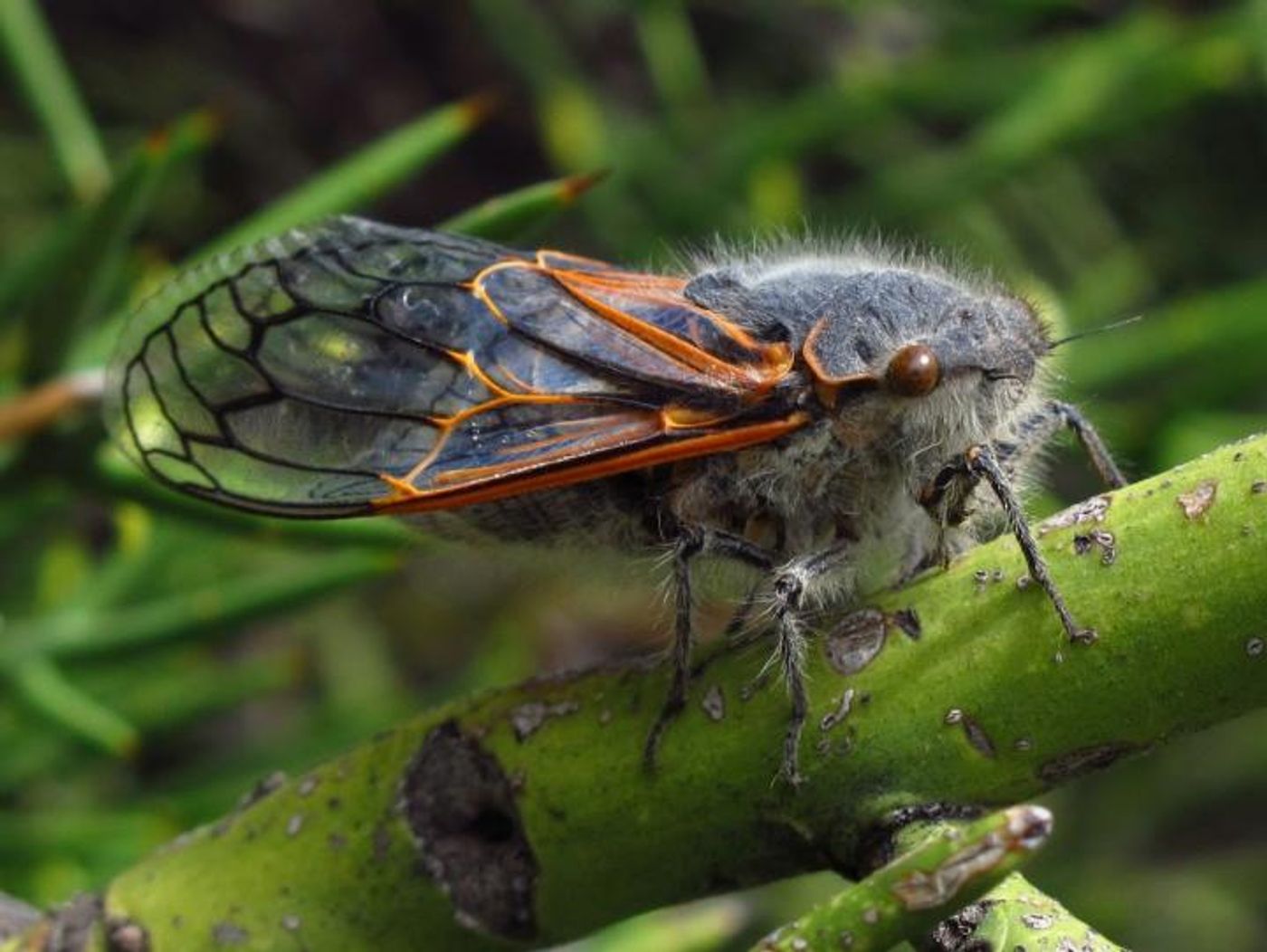Unusual Gene Evolution in Bacteria
Researchers at the University of Montana researchers have discovered an extreme change in bacteria that lived within cicadas long ago. The alterations that took place at the cellular level can help us understand basic processes in biology shared among all life on Earth; these bacteria have lived inside of these insects since dinosaurs habited the planet.
Over 70 million years, the bacteria had to lose an incredible 95 to 97 percent of their genes in order to live in the cicada. They now possess some of the smallest known genomes of any organisms, but they also can’t live anywhere else but inside of a cicada.
"Cicada symbiotic complexes are very different from any other known organism," noted Matt Campbell, a UM graduate candidate studying cicadas in the lab of UM biology Associate Professor John McCutcheon (part of the Division of Biological Sciences).
There are many examples of insects living in symbiotic relationships with hosts, in which both species need one another for critically important processes. In insects, that may mean the bacteria are helping the insects metabolize certain foods, and ensuring a supply of the right nutrients.
This work has indicated that the symbionts living in cicadas are synthesizing vital amino acids and vitamins that are needed by their insect hosts for growth and reproduction. Over three field seasons of studying a type of South American cicada, UM postdoctoral researcher Piotr Lukasik discovered that many of the bacteria living in symbiosis with the species evolved into complexes made of several different strains of bacteria in the same cicada.
"Through that process, individual bacteria have lost many genes and now depend on each other because every type contains unique, essential genes," Lukasik explained. "The different types must all work together to provide the amino acids and vitamins their cicada host requires."
A different kind of cicada that resides in the eastern United States hosts dozens of tiny bacteria that rapidly evolve. Individuals contain very few genes that are recognizable; they are also dispersed among different cell types in the cicada, which is not well understood.
"Cicadas host symbiotic complexes rather than a single, well-behaved bacteria, which could be a challenge for the species," Lukasik explained. "After all, when you need a meal - whether it is a vitamin required by a cicada or a pizza craved by a hungry student - it's easier to obtain it from a single source rather than cobbling it together from several different sources."
The investigators have suggested that this bacterial evolution has been a chance occurrence, and although it is not beneficial to the cicada, those microbes will now remain where they are. The cicada needs them for survival, now.
"Indeed, the cicadas with the longest life cycles are also those with the craziest bacterial symbionts," Lukasik said.
Some of McCutcheon’s previous work is outlined in the video above.
Sources: AAAS/Eurkealert! Via University of Montana, Current Biology, PNAS









